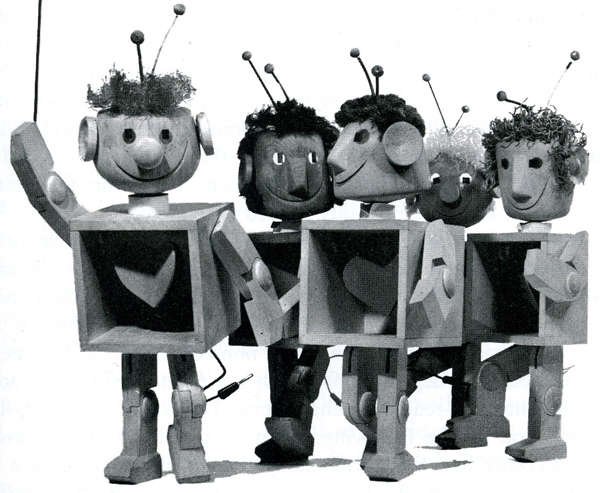One More Swing of the Club
When I sat down to write this piece—my last post for Ploughshares—I knew I wanted to bookend my stint as guest-blogger with another yoga/writing essay. I wanted to talk about writerly humility; specifically, how I’ve come to a better understanding of humility through Child’s pose. I figured I’d describe the pose first—face down, toes touching, knees spread, arms stretched forward—and tell you how the posture enters into a typical yoga practice (often as our starting place; always a posture to which we can return, at any time during our practice, to rest and re-connect with the breath).
I would then go on to describe how I feel when I’m in a challenging posture—Standing Splits, say, or Warrior 3—and know I’m going to fall out: muscles burning, balance faltering, my legs and arms shaking. This is when I get into Child’s pose, and it feels good, but often what’s in my head is: you just failed. You’re not as good at yoga as the others in this class. You need to get stronger, push harder. Take this short rest, but when you get back up, you’re going to do better.
As many times as I’ve had these kinds of thoughts in Child’s pose, it was only when I began to write this post that I realized this is the way I think. That Child’s pose isn’t, in fact, a pose at all, but a non-yogic break from the “real” postures. A failure.
E.M. Forster famously said: How do I know what I think until I see what I say?
Is this what I think?
Worse: I actually convince myself that what I’m feeling, resting there in Child’s, is something approaching humility. But when I’m having these supposedly humble thoughts—I’m not that good, I can get better—I’ve forgotten about whatever intention I’ve set for my practice. I’ve forgotten that yoga isn’t even about doing the poses. (A yoga pose, my favorite teacher says, is simply a vessel for contentment.)
I’m thinking about me. My failure, my potential.
But I was going to connect all of this to my writing practice! How sometimes I sit down at the desk, start to go through the poses/write sentences, and everything is off-balance, nothing is flowing and I’m not enjoying the work—the work hurts—and my mental muscles are screaming you can’t do this; and how, when I’m in that quivering, toppling place, my reaction is to step away and re-engage with my figurative breath: real life. I tell myself I need to forget about writing for a while. Call a friend, see a movie, take the kids and dog to the park. Clear my mind of all the characters and scenes crowding up against each other, jostling for space.
Isn’t this what Child’s Pose looks like, for a writer? To admit weakness; to rest from the work in order to get stronger for the next go-round; to eventually become one of those writers who, without fail, produce a thousand words a day? Admission of my own failure + admiration for those who seem to have overcome it = humility. Right?
There’s nothing inherently wrong with taking extended periods of rest; just as, of course, there is nothing inherently wrong with coming into Child’s Pose. Rest is crucial. The trouble was, and is, my perspective on rest—as if the need to step away from writing represents, at some level, failure; as if real life has nothing to do with the work of writing.
I decided I couldn’t write about Child’s pose and writerly humility, because what I was experiencing in the posture, and in my periods of rest from the writing work, wasn’t humility.
Panic: It’s Tuesday and I have nothing to write about for my last Ploughshares post.
Thank goodness the Olympics are on.
*
Ethiopia’s Tiki Gelana won the gold medal in the womens’ marathon on Sunday. I got up at six to watch the race. She finished in 2:23:07, an Olympic record. (For those not familiar with marathon times, 2:23 averages out to a 5:45 pace—faster than some of us can sprint a single mile. And to put that time into perspective, the world record for the women’s marathon is 2:15:25; most world-class female runners have sub-2:20 marathon PRs.)
Gelana fell during the race and injured her elbow. She broke stride to grab water bottles for her teammates. Aside from a brief burst of sunshine, it rained the entire race. And Gelana still broke the record. After the finish, soaking wet, the Ethiopian flag wrapped around her body, she finally smiled, and looked…well, shy. A little bit shocked. In the press conference after the award ceremony, Gelana said: “Bekoji produces athletes on a daily basis. Running is a lifestyle in Bekoji and I am just a part of that.”
Gelana was talking about Bekoji, Ethiopia, a town of 17,000 people located 105 miles south of Addis Ababa. Bekoji lies 9,220 feet above sea level, and is known for producing world-class runners: five gold medalists, all of them coached by a former schoolteacher named Sentayehu Eshetu. A reporter for the Guardian went to Bekoji and asked Eshetu: what’s the secret of your magic? Eshetu seemed confused, even hurt. He said there was “no question of magic – the success of his athletes was down to a diet of barley, hard work, and running at altitude.”
So: Gelana said her success was a result of her lifestyle, that she was just one of many; Eshetu said the success of his athletes was the result of diet, discipline, and geography. Neither of them said a thing about individual genius or talent or giftedness. In fact, questions about themselves seemed only to confuse them.
And I was going to tell you about my version of humility?
Of course the other Olympic athletes—winners and losers—sound pretty much the same in their post-event interviews. They keep saying things like “the team” and “my country” and “hard work” and “my family’s sacrifices.” None of them say things like “I’m not as good as,” or “maybe someday,” or “I just need to forget about my training for a little while and then maybe I’ll come back stronger.”
The formula seems to be: intense work + focus on the big picture = humility. It also seems to equal success.
What strikes me, watching runners face the track, swimmers the lane, gymnasts the beam and vault and pommel, is the fusion of confidence and vulnerability on their faces. Many of them know they won’t medal. Some, especially the gymnasts, know there’s a good chance they could fall and get injured. Most know that what they’re about to attempt is, in human terms, impossible (watch McKayla Maroney vault). But they stare it down and do it anyhow, because what they’re doing is bigger than the self, with the dimensions of an entire country.
To continue working toward a goal when you know the goal (a medal, a novel) is so huge it’s beyond you; to practice something, over and over and over again, even though it hurts like hell, not because you are worthy, but because the thing itself is–if humility resides anywhere, it’s here.
Madeline L’Engle, in Walking on Water, says “When we were children, we used to think that when we were grown-up we would no longer be vulnerable. But to grow up is to accept vulnerability.”
That was, and is, my failure in the way I’ve thought about Child’s Pose–the need to rest– both in my yoga practice and in my writing. I see it as revealing my vulnerability. And something in me wants to reject the fact that I’m vulnerable.
Somehow, I’ve convinced myself that confidence and vulnerability can’t co-exist.
Last night Gabby Douglas—who’s already won two gold medals in gymnastics, one team, one all-around—competed in the individual uneven bars event. She misjudged a handstand and fell out the wrong way. She came in last place. I watched her interview just after the event. When asked about the routine, all she said – I’m paraphrasing—was Yeah, I fell out the wrong way, but it was an honor to complete at this level, with these athletes.
And the fatigue? Again, I’m paraphrasing, but she said, I’m tired physically and emotionally, but I just want to rest up and work hard for the next event.
Such quiet assurance, even though minutes before she’d just “failed.” Hard work + big picture (“I want to make history”). Gabby Douglas gets it. She’s sixteen years old.
*
Our yoga teacher told us the story of a woman who was undergoing cancer treatment. She was so weak she couldn’t do a single standing pose. But she kept showing up to class. Her husband would come in and set up her mat and water bottle, then help her get into Child’s pose. And she would stay there for the entire sixty-minute class, breathing, sometimes coming up into tabletop position and doing a few cat/cows and, at the end, coming into Shavasana (corpse pose) along with the rest of the class.
She was in pain. She kept coming.
Do you ever think about taking a break from yoga? someone eventually asked her.
The woman seemed shocked by the question; the thought had never occurred to her.
I guess yoga’s just what I do, the woman said.
Last week I heard Richard Bausch give a talk at the Sewanee Writers’ Conference. If anyone understands writerly humility, it’s Bausch. (His Facebook posts alone are must-reads.) Talking about the urge to write, he said: “one writes out of a kind of beautiful necessity.”
No magic. It’s just what we do.
Bausch also said: “Remember, a finished manuscript is just one swing of the club.”
I worked for seven years to finish a manuscript. One swing of the club? How many swings does a golfer take during a single round of golf? In a lifetime of rounds?
This writing thing is so much bigger than I am.
Another thing my yoga teacher says: it often takes more strength to come into Child’s Pose than it does to hold a more difficult posture.
Why didn’t that sink in until now?
*
Here’s where I leave you, friends. I’m going to send in this post. And then I’m going to keep sitting here, for at least another hour, to attempt some work on this novel. The Novel. A posture I know I’ll fall out of, over and over. I’m terrified; a failed short story is one thing, a failed novel another. But I plan to push a little harder, a little longer. And yeah, there will be days when I’ll need to walk away from the work and rest–but I hope with time and practice, I won’t see that rest as failure.
Hard work, big picture. One more swing of the club.


